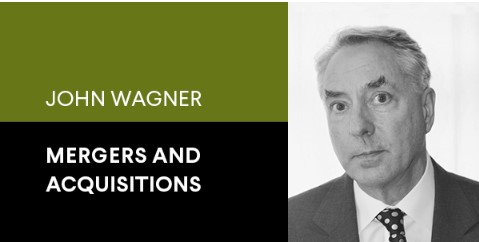M&A Activity Won't Slow Down for These Companies
Originally Published by: LBM Journal — October 13, 2022
SBCA appreciates your input; please email us if you have any comments or corrections to this article.
Selling your business in an inflationary period doesn’t necessarily mean selling it at a discount. But for your business to hold value in these frothy times of high interest rates and high inflation, it should have three key attributes. With these in place, you, the seller, can argue for getting the same value you would have obtained before interest rates and inflation came into play.

Our firm subscribes to a proprietary deal-value database, GF Data, and its value guidance has been rock-solid, reaching back years. In a recent GF Data report, they identified these key attributes, while drawing a direct line to premium values obtained by these elite companies. They are: 1) ownership of the seller by an institution, rather than a family; 2) the seller provides a “management solution” post-sale; and 3) the seller displays “above-average” financial characteristics.
Let’s drill down on each one. First, ownership by an institution is a tough one to accommodate in the LBM space. Every one of our past clients has been families selling their businesses. These families have demonstrated superb corporate stewardship, but private equity buyers have an affinity to buy from other private equity groups (PEGs). Here’s why: private equity buyers and sellers have likely prepared companies for transactions using purely empirical metrics and KPIs—stone cold data—whereas family sellers may expect premium for the company’s legacy, e.g., its place in the community, its philanthropy, etc. You rarely see that rewarded in PEG-to-PEG transactions.
Second: The management solution, a.k.a. leadership continuity. Most of our clients want to stay just one-year post-sale. In fact, they’ll call our firm and lead off by saying, “Well, I’ve worked 45 years, missed 17 Christmas dinners, and I want to sell and get the heck out!” That’s perhaps the last thing a private equity firm wants to hear. They will value the company based on the EBITDA generated by the management team that’s staying around, not the one that’s leaving. Don’t underestimate the value reduction if you intend to vacate leadership deemed essential by a buyer.
The third attribute is “above-average” financial characteristics, and this carries the most weight of the three. In the LBM space, we define above-average as a “10 and 10” company.
Are you one? Here’s how to tell: If you have the first “10,” you are operating at >10% EBITDA margin. A 10% EBITDA margin in our industry is a solid figure. We have seen (and successfully sold) sub-10% companies, and we have seen EBITDA margins much higher. Sub-10% performance, however, likely means you are a commodity-heavy operation, vulnerable to volatility, and handling lots of money to book a small percent of it as free-flowing cash.
The second “10” in the “10 and 10” company is sales growth. Are you growing at 10% compounded each year? That’s very strong growth, doubling in 7.2 years.
What kind of a value premium can you expect for having these attributes? Well, it’s substantial, and long-term investors (the five-year-holders) will overlook lots of the near-term froth if you display these numbers…or even approach the growth profile. GF Data reports that for a company in the $10-$25mm purchase price range, the premium you will get is an additional 0.5X your EBITDA. Half a turn? Isn’t that small beer? Hardly. Let’s say you are at $20mm revenues, with a 10% EBITDA margin. Your EBITDA is $2mm. At 5X, you’d get $10 million for your company, but at 5.5X, you’d get $11 million. (Ha, that’s just enough extra to cover almost half your taxes!) For companies whose purchase price is $25-$50mm, the premium reported by GF Data is 0.8X, and for larger companies, the baseline multiple is higher too. A $25mm company with 10% margins will have a $2.5mm EBITDA. The non-premium company might get a 7X for a purchase price of $17.5mm, but the “10 and 10” company would get 7.8X, for a purchase price of $19.5mm. (Enough extra to pay nearly all your taxes!)
If you are not both 10% EBITDA margin and 10% growth, the one to especially focus on is the EBITDA margin. It indicates your earnings efficiency and it’s the gold standard to attain the highest value, no matter how fast you’re growing.
